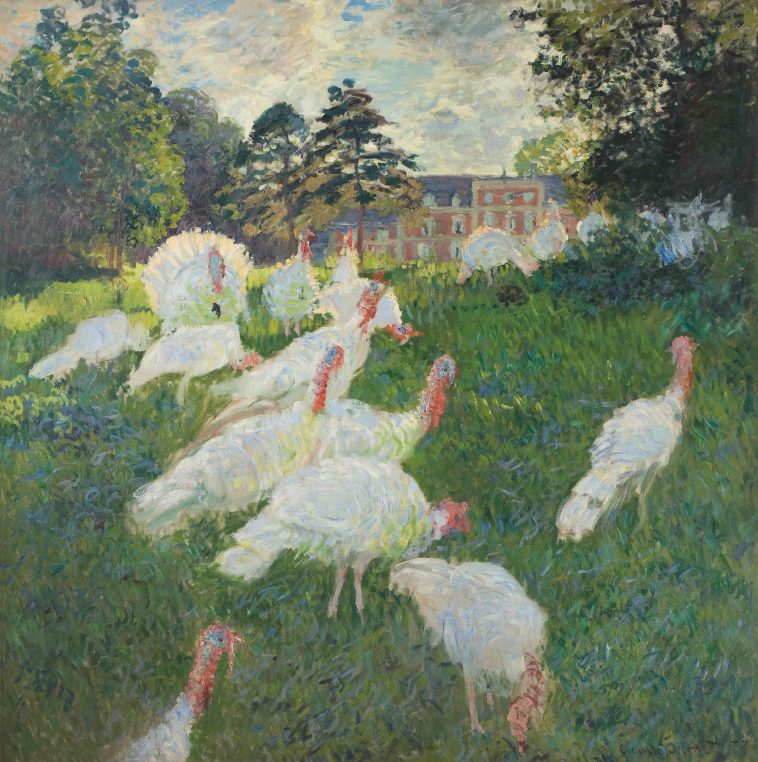
Claude Monet, Les Dindons, (turkeys) 1877, unfinished for the living room of château de Rottembourg, belonging to the Hoschedé in Montgeron, Paris, musée d’Orsay, bequeathed by princesse Edmond de Polignac born Winnaretta Singer, © Musée d’Orsay, RMN-Grand Palais / Patrice Schmidt
It is again a well researched show which Musée de l’Orangerie is presenting with one hundred paintings and objects by the Impressionists which were important in the development of a new decorative language at the turn of the century. Dismantled dining rooms or country houses lead to framed flowers and boaters which were originally part of a series. “Le Décor Impressionniste, Aux Sources des Nympheas” (Impressionist Decorations) is the story of how Caillebotte, Mary Cassatt, Monet, Morizot, Renoir, Marie and Felix Bracquemond, Boudin and Manet delivered everyday life items such as fans and plates, but also murals in Cézanne’s case, panels and doors in large castles. Curated by Sylvie Patry and Anne Robbins, it is a luminous show which starts with “peintures idiotes” (absurd paintings) and where flowers and gardens play a large part. Monet’s Water Lilies “the great decoration” (as he called them) hailed by André Masson as the “Sistine Chapel of Impressionism” are permanently visible upstairs in the museum’ two oval rooms.
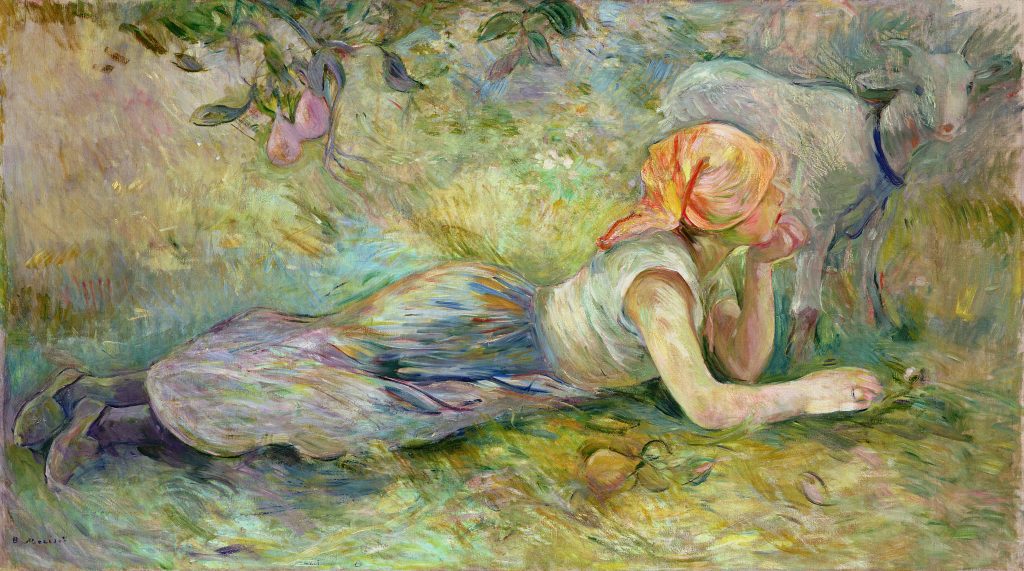
Berthe Morisot, Lying shepherdess, 1891, Decor for the artist’s apartment at 40 rue de Villejust in Paris, musée Marmottan-Monet, bequeathed by Annie Rouart, © musée Marmottan Monet, Paris
The visit starts with “Les peintures idiotes” (absurd paintings), overdoor pictures, stage sets, carnival backdrops and popular brightly colored prints which stand out for their new language in the late 1850’s. Far from winning public commissions for town halls or train stations during the Second Empire and the Third Republic, the Impressionists painted colorful scenes for their families and friends. Degas confessed “It has been my lifelong dream to paint walls” and the same is true of Renoir who painted overdoor panels in Jacques-Emile Blanche‘s house in Dieppe. They took part in the increasing beauty in everyday life at at a time when industrialization and the diffusion of visual arts exploded.
Described at first as vulgar decorations, the Impressionists’ paintings were compared to wallpaper by art critic Louis Leroy who invented the word Impressionist. In the late 1880’s Félix Fénéon praised them as “decorative genius”. This ambiguous notion lasted from the 1850’s to the 1920’s when the Water Lilies were completed. The series of plates by Marie Bracquemond for Montereau is particularly interesting and the numerous projects for fans by Degas or ceramic tiles by Pissarro show their preoccupation to keep art as artisanal (not industrial). Claude Monet paints “Villas in Bordighera” for Berthe Morisot‘s apartment in Paris where the artist had already copied herself a François Boucher scene.
Sceneries in the fields and on the river by Caillebotte are competing by Emile Gallé’s vases and Charles Le Coeur’s architectural watercolor projects for Prince Bibesco’s hotel in Paris. The Water Lillies also appear as carpets. What is probably most interesting is the series of decors of the Four Seasons painted by Cézanne in his parents’ house in Jas de Bouffan, which is also described in a video. And you will adore or hate Monet’s chrysanthemums, Caillebotte’s orchids and katleyas (loved by Proust) and his panel of “Parterre de marguerites” lent by Musée des Impressionnismes in Giverny which is now part of Musée d’Orsay as is l’Orangerie.
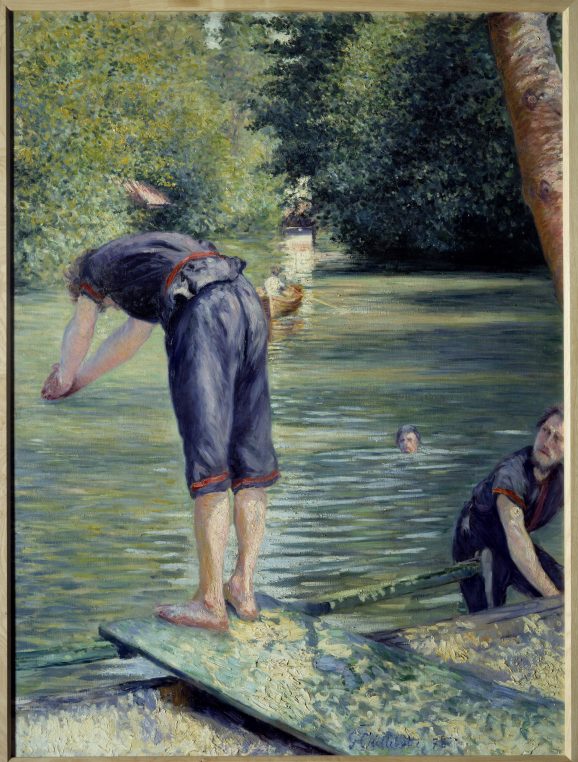
Gustave Caillebotte, The bathers, by the Yerres, 1878, private collection, photo Josse, Bridgeman images
Until July 11 at Musée de l’Orangerie. A video installation by Ange Leccia with sound by Julien Perez is also visible as a tribute to Monet. The exhibition Monet/Rothko has just started at Musée des Impressionnismes in Giverny.
Share this Post
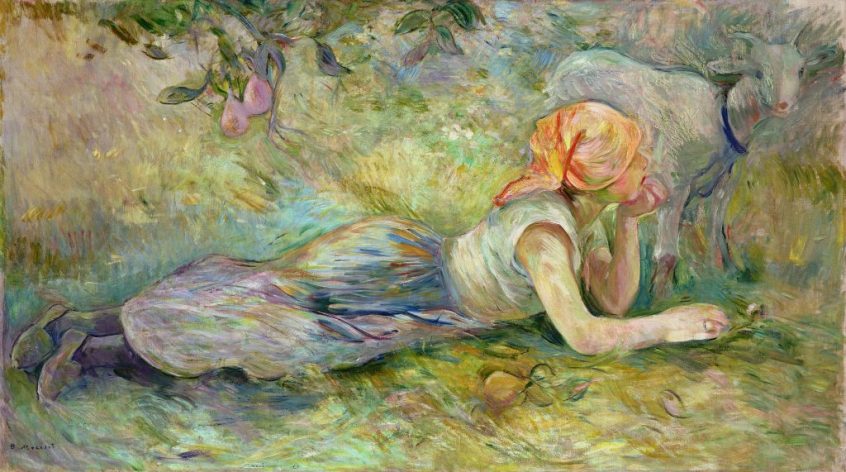
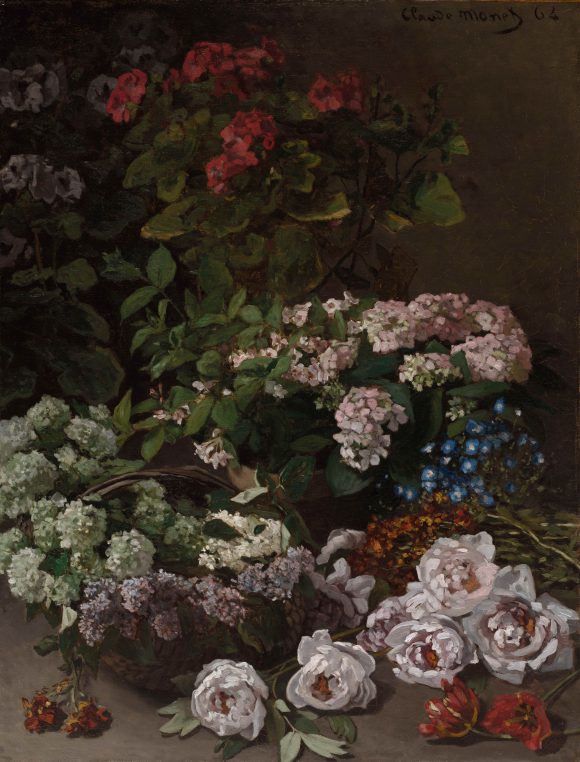
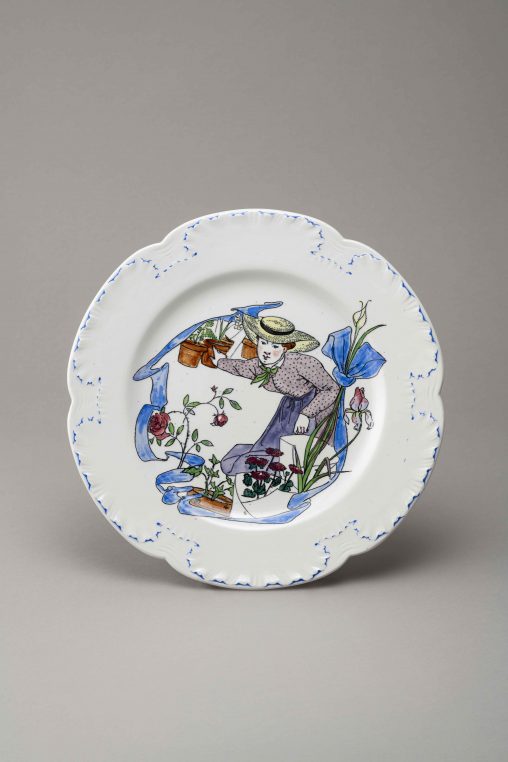
One Comment on “At l’Orangerie, colour explodes in Impressionist painters’s decors”
Thank you for all of the wonderful information you provide! So lovely to see!